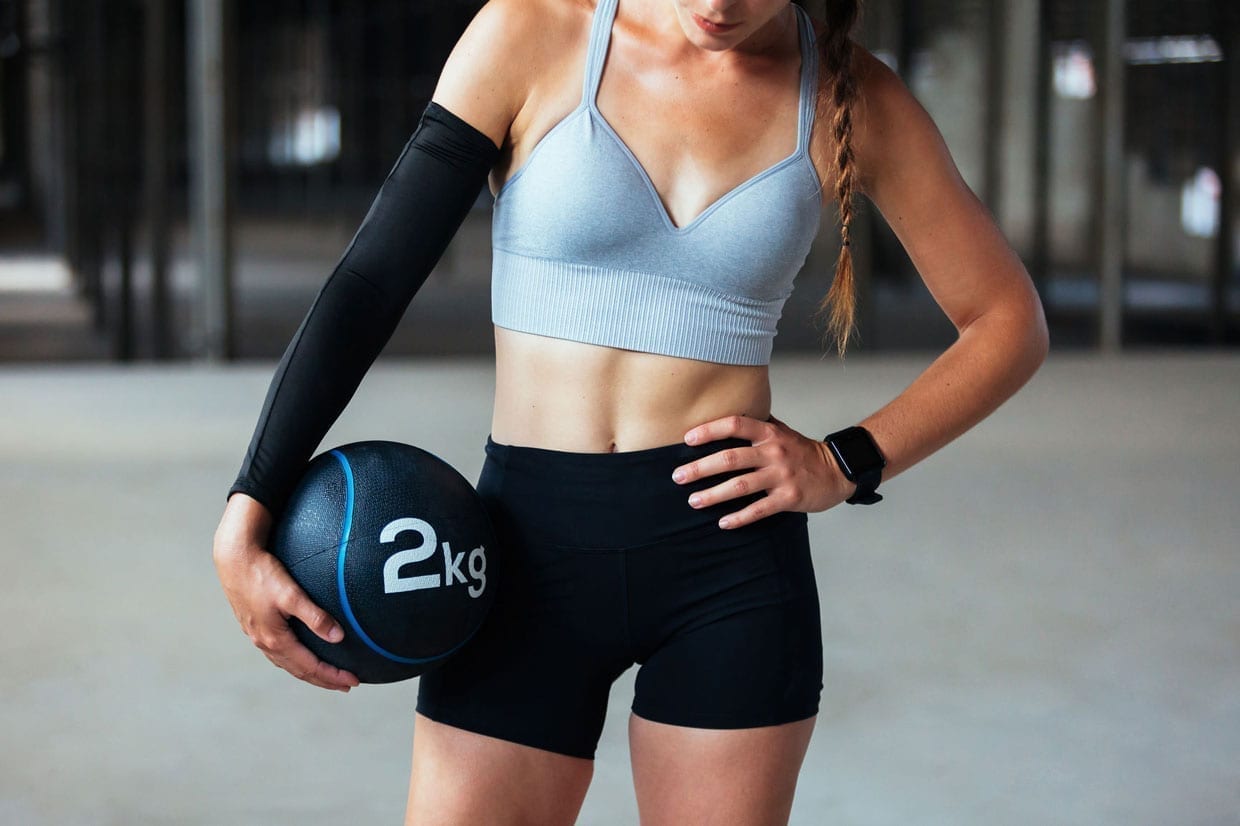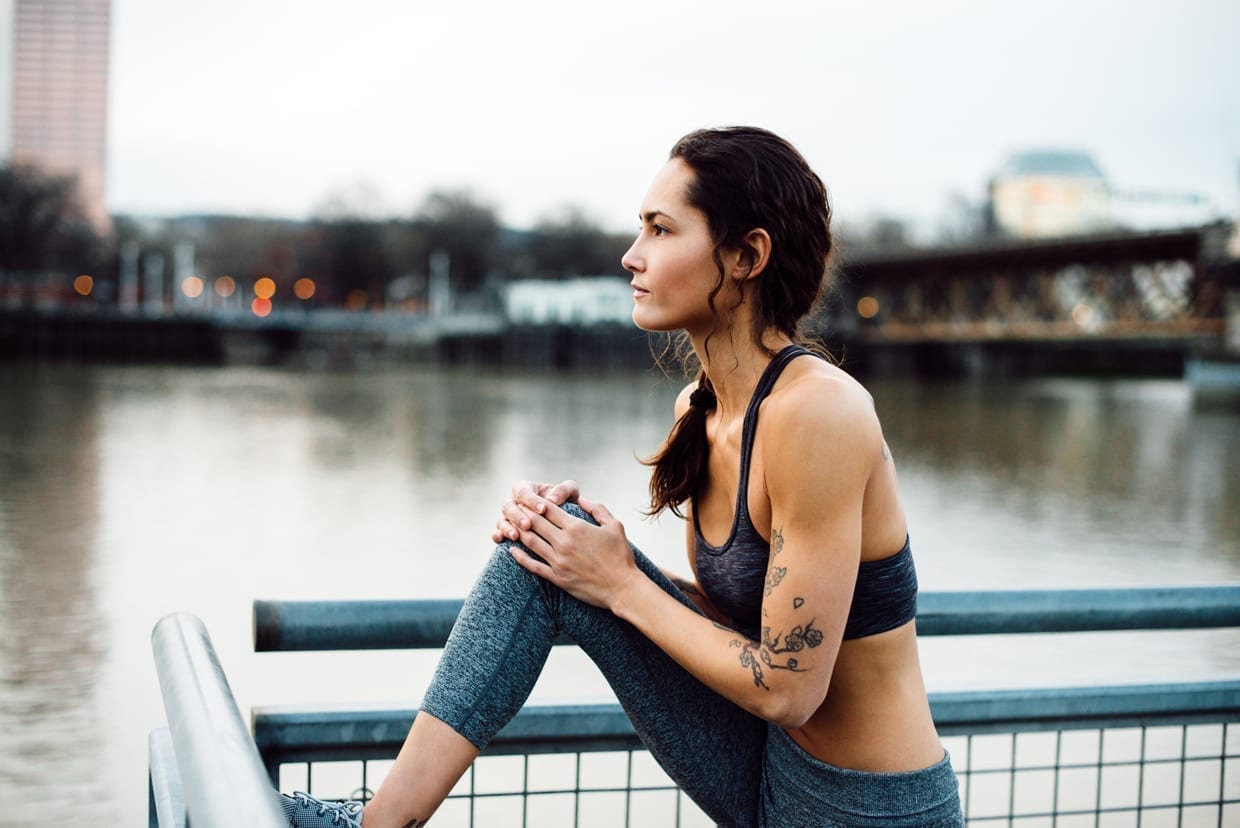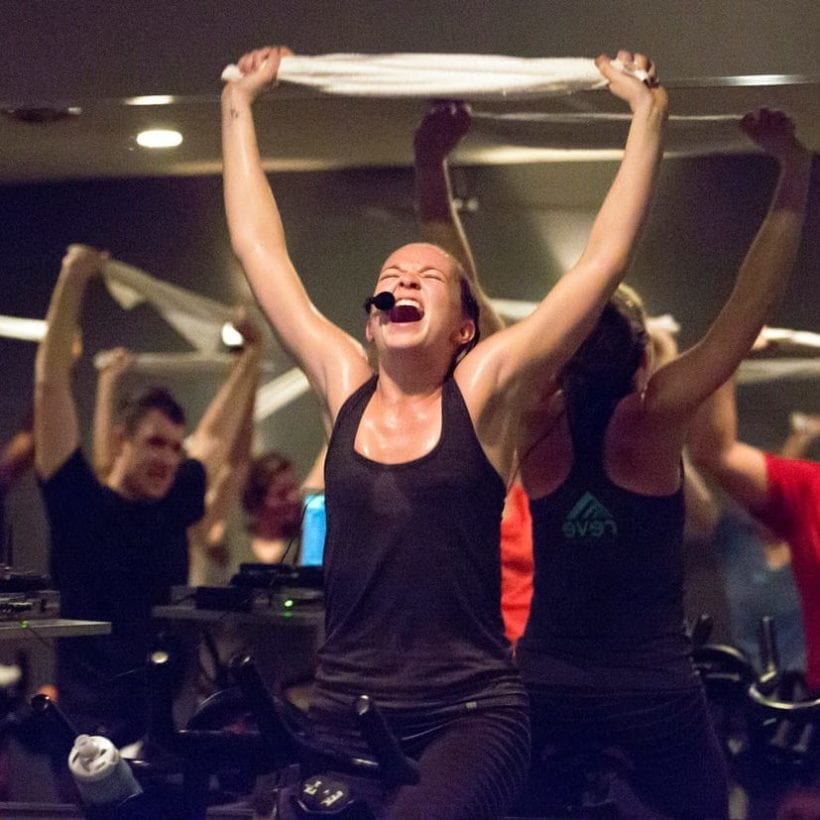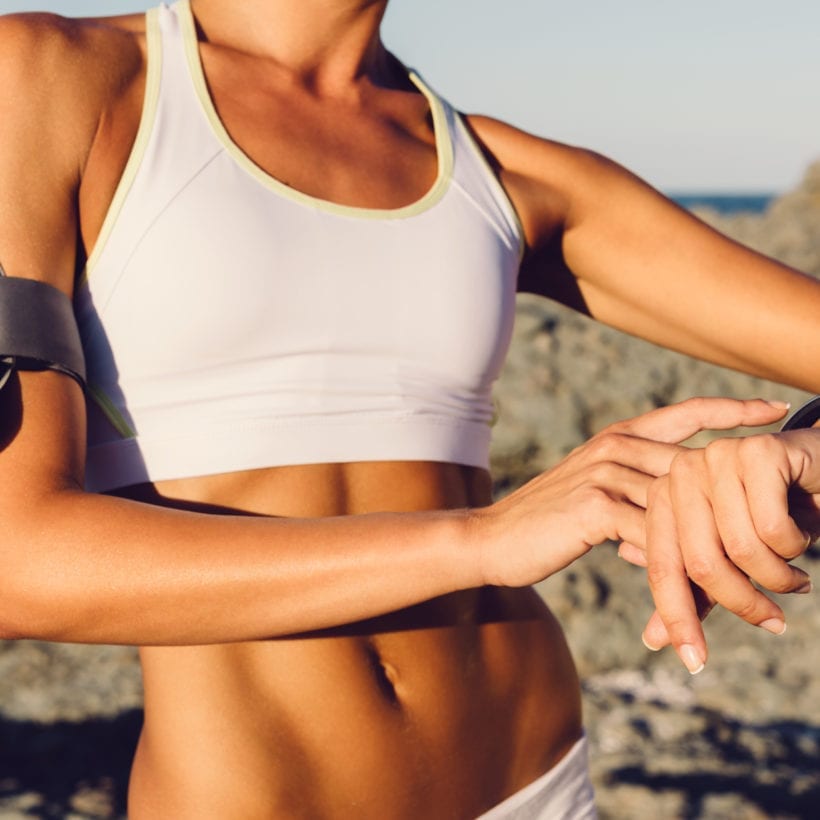Do you bounce from workout class to boutique gym daily but continue to stay disappointed with the results? The truth is, anxiety could be sidelining your fitness goals.
Your life outside the gym can affect the work you do in it — and it starts with your mental health. Anxiety affects more than 40 million people in the U.S. each year. And a well-known relief for said anxiety is exercise. In fact, studies prove that those who participate in regular exercise will experience fewer anxiety symptoms.
But the fact of the matter is anxiety affects the muscles that we use to complete our fitness routines. “Anxiety naturally makes you tight. If you’re anxious, your jaw is going to be tight, your eye might twitch a little bit, you might have a stress headache. If you look at yourself in a photo you’re probably going to have your neck muscles constrained a bit,” says Chris Ryan, C.S.C.S and founder of Chris Ryan Fitness. “When I’m training people … I talk about relax[ing] your face. Especially when we’re doing something hard.”
Managing your muscles is more important than ever before as smartphones affect our spines, lack of sleep affects, well, everything and anxiety continue to rise. So, Ryan talks us through what your muscles should look like, and the steps you can take if you walk into the gym with a tight and tense body.
What Does a Healthy Muscle Look Like?
According to Ryan, look no further than Olympic athlete Usain Bolt. Or, more accurately, Bolt’s muscles. “Tense muscles are weak muscles. If a person is tight, they’re not operating at their full capacity,” says Ryan. But Bolt is different. “In slow motion, you literally see all of his muscles … moving up and down together, but relaxed. If he goes up, his deltoids go up. And if he goes down, then his core gets restricted and retracted back,” explains Ryan.
A healthy muscle is loose and moves almost like a “wave.”
Stress can shorten your muscles, so a healthy muscle is loose and moves almost like a “wave.”
“It’s the ability to be super relaxed and operate at full capacity when you need to,” Ryan adds. “If your neck is tight, your traps will be tight. If your traps are tight, your spine will be out of whack. Then, your hips will be out of whack.”
The important thing to note, though, is that the focus shouldn’t be on one muscle. The body is interconnected — the better the connection, the better the spine, the better the muscles, the better the workout. Ryan calls out one of his clients as proof. A 35-year-old woman came in with wrist issues due to her cell phone (more on that later). But to address the problem, Ryan created a different plan. “Sometimes, it’s not so much the actual area that feels tight or injured, it’s the area surrounding that or above or below that that leads to [the pain]. We found out that when we incorporated a little more shoulder work and a little more pliability work in the elbow area, it helped out her wrist,” he says. “The stronger her shoulder could be, the better off she could be in her smaller muscles. And the better off your support muscles are going to be, the better off your big muscles are going to be.”
How to Handle Tight and Tense Muscles
What can we do? Ryan has a few suggestions before you even get to your reps:
Focus on functional movement. This is perhaps his biggest takeaway. “If you’re doing functional style workouts … if you naturally follow the movement patterns of the way the body moves, then you are good to go,” he says. And you don’t have to be into yoga to practice it. In fact, Ryan says that if he finds 45 minutes of yoga is too much to commit to for his clients, he will do a 10-15 minute mobility session at the beginning of the workout — with yoga style moves — to get them moving more functionally. Other options include banded tension workouts and scapular work for your upper back and upper thoracic region.
Limit screen time. Ryan says he has seen a huge change in muscles after the introduction of the smartphone. “They’re one of the best things and the worst things for us in the world. You can do so much of your everyday activities on them, but at the same time, you can get carpal tunnel at 35-years-old, or 25, or 15 because you are constantly on your phone,” he adds. And since you spend more time with your phone than you do at the gym, working on the functional movement and strength of your muscles when you are there is even more important. Consider it “pre-hab,” preventative steps to keep you out of rehab. “All these soccer players, and football players, and basketball players and tennis players are doing rudimentary mini band work and TheraBand work. They’re not trying to load and get super big strong muscles. They’re trying to make sure those smaller support muscles are ready to get fired up,” explains Ryan.

Embrace the medicine ball. As a personal trainer, this is his favorite solution. No matter what weight you think you are comfortable with, always start light, he says, around 4-6 pounds. As for how to use it, Ryan explains: “You do a sumo squat and I roll the ball back to you and you pick it up from a full sumo squat style position and you pitch it back to me.” Or, soccer throwing for spine health, body awareness and hand-eye coordination. As for rotational work, “you’ll be perpendicular or facing away from me and then you turn and twist and throw behind you over your shoulder,” he says.
Get your heart rate up. If you are walking into the gym feeling tight, this is the first thing you should do. Ryan suggests either a light jog (even if you know you can run a mile in six minutes, don’t) or jump rope. “Get your heart rate up to the 120-140 [bpm] range just for a light sweat,” he says. “After that, you can get into a better dynamic warm up with [high knees], butt kickers, arm swings, [and] arms across the chest.”
Just make sure to always switch it up. “Never get bored,” he says. “Your muscles can get bored very easily.”
We only recommend products we have independently researched, tested, and loved. If you purchase a product found through our links, Sunday Edit may earn an affiliate commission.







